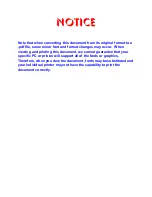
English
30
WILO SE 03/2011
*)
Speed max. 200 rpm; if necessary, put the keyhole saw down once in a while to remove
drilled material. If this material is not completely removed, the tank material heats up and
starts to melt; Interrupt the cutting process, allow to cool and clean the keyhole saw; Lower
the speed, vary the feed pressure, and then maybe change the direction of rotation (anti-
clockwise rotation max. 200 rpm), until there is no more material.
NOTE: Check to make sure that the cut diameter is 175 mm for DN 150 or 124 mm for
DN 100 once in a while, since the leak-tightness of the pipe connection depends on this
decisively.
Fig. 6: Setting up the inlet port (DN 150 / DN 100)
1.
1.
• Define the position of the middle of the inlet – and mark it
• Cut the hole using the keyhole saw Ø175 (DN 150)
• Make sure the excess material in the drill bit is removed
completely.
*)
2.
3.
2.
• Make sure the cut surface is clean!
Remove burrs!
3.
• Insert the inlet seal
• Moisten the inner surface of the seal with lubricant
4.
5.
4.
• Insert the inlet pipe – HT pipe DN 150
5.
• Push-in depth:
minimum 30 mm beyond the seal,
maximum 300 mm above the base of the tank.
6.
6.
• Connect the inlet pipe and inlet seal using hose clips.
• Set the pipe clips correctly in order to secure the inlet pipe
to prevent it from slipping in the seal and in order to hold
the weight of the pipe.
min. 300
Содержание DrainLift XL
Страница 2: ...Fig 10...
Страница 3: ...Fig 11...











































